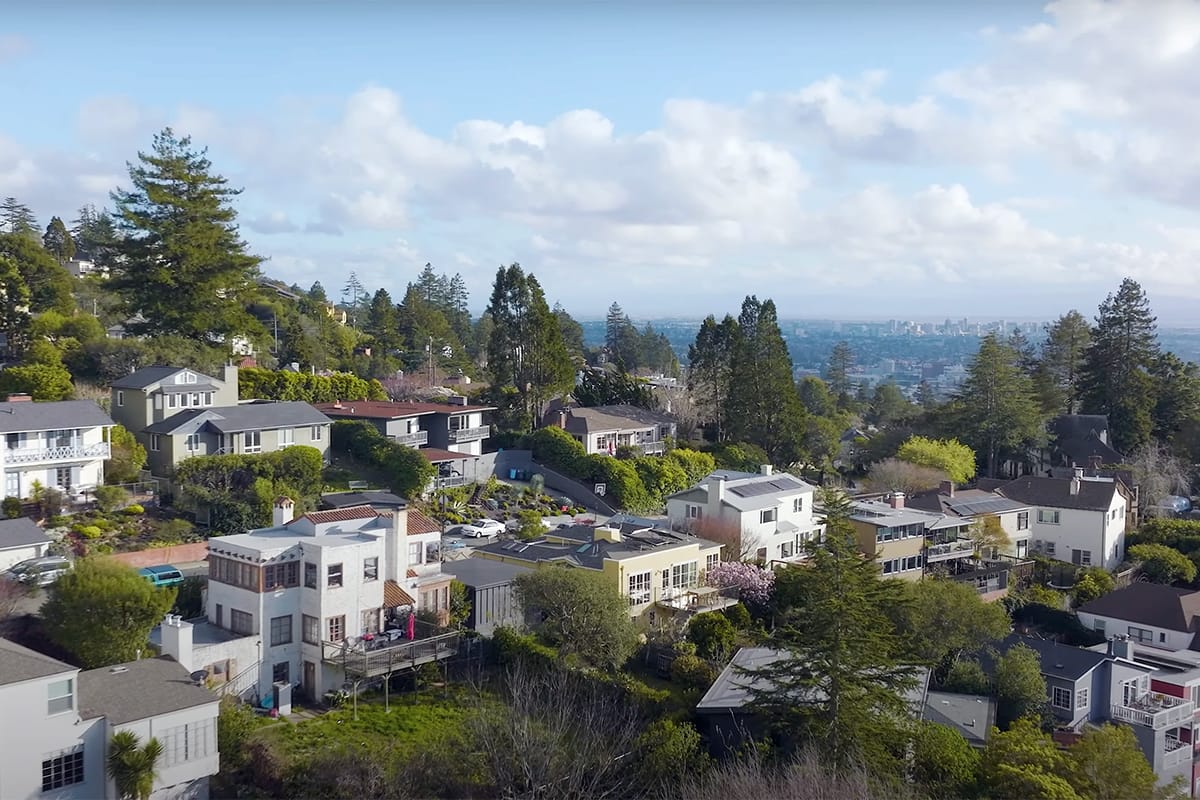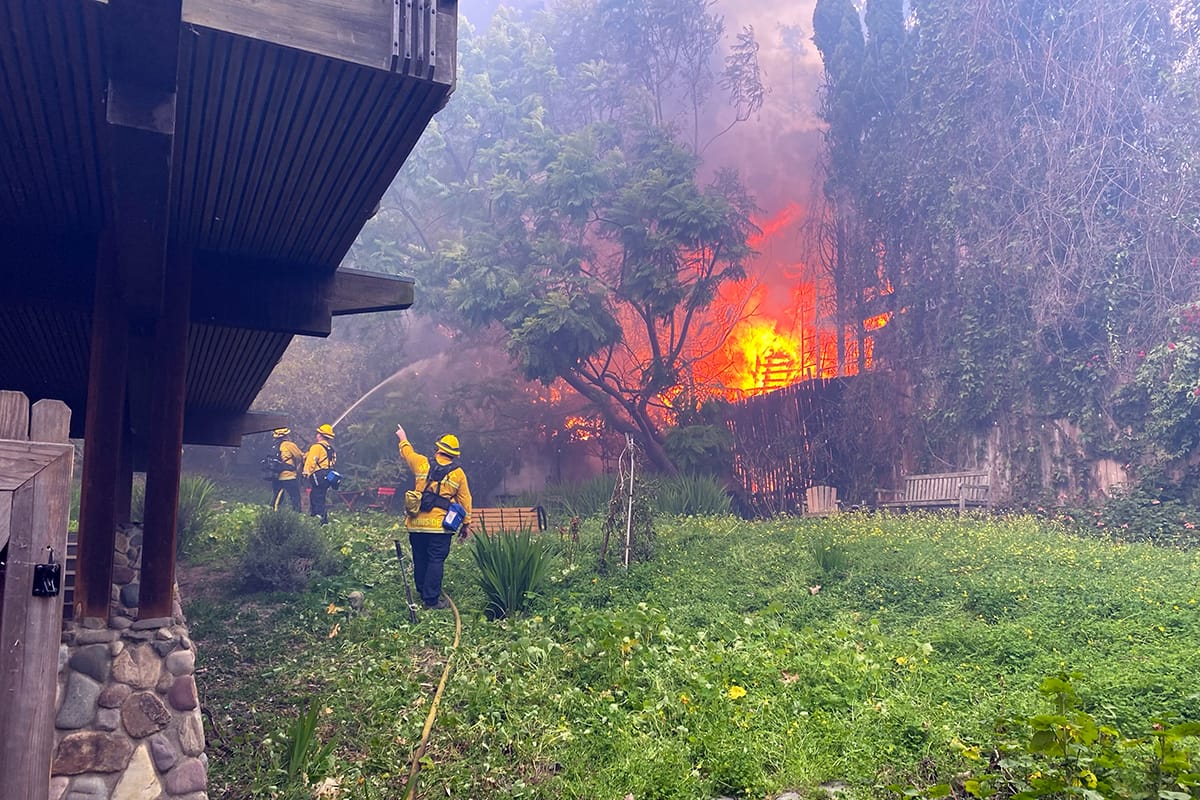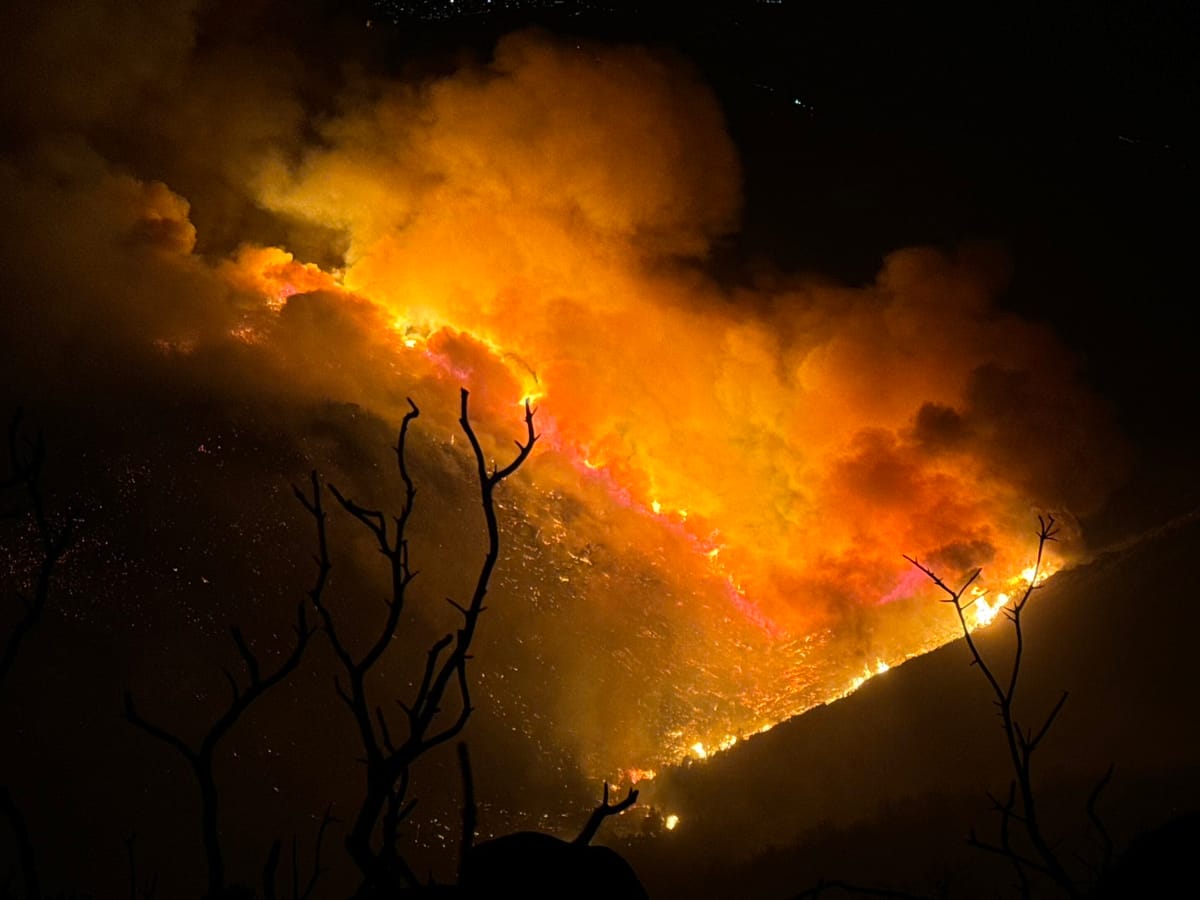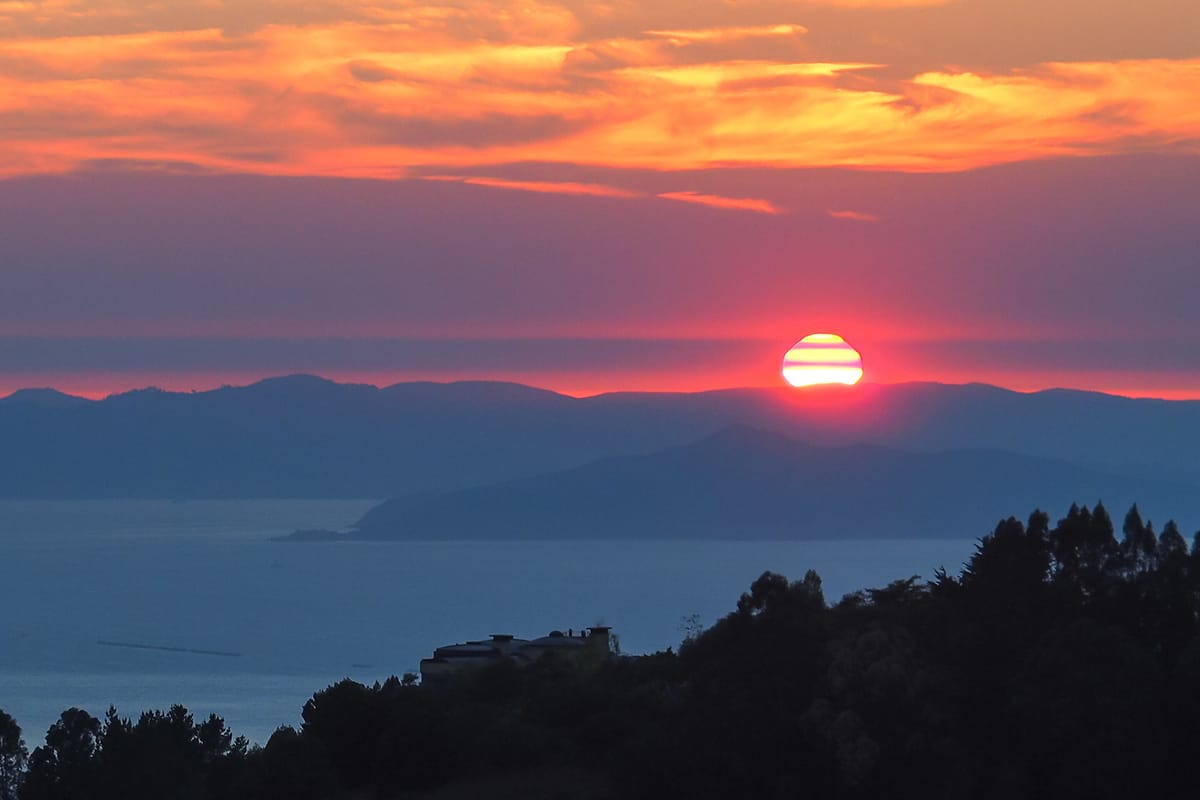Berkeley aims to up wildfire prevention rules after LA fires
"I'm under no illusion that this process will be easy," said D6 Councilman Brent Blackaby. "We're asking a lot of the community."
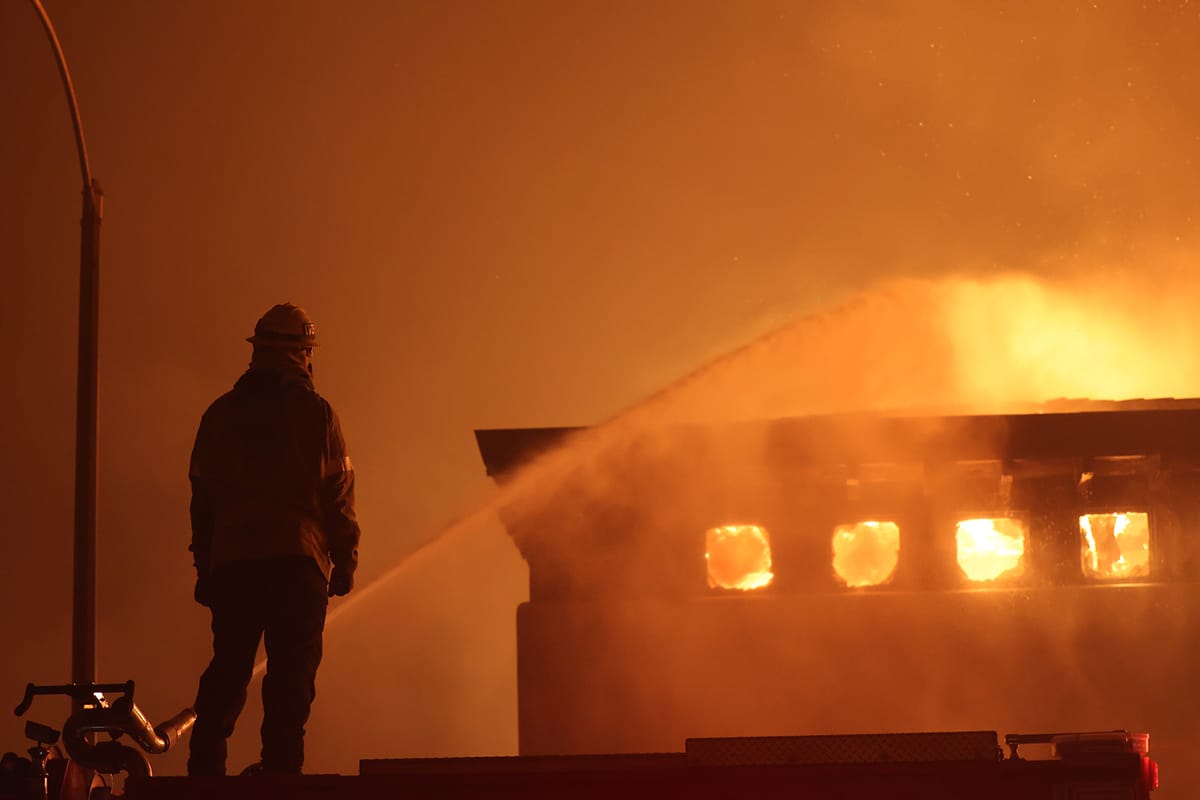
A bold plan to significantly tighten Berkeley's wildfire preparation framework is headed for City Council next week, hastened by recent images of Los Angeles neighborhoods falling to fire fueled by severe winds from the east.
The Berkeley Fire Department said its push to get the plan before officials was motivated by the devastating Los Angeles fires — though many of the ideas have been discussed for years, said Berkeley Fire Chief David Sprague.
"Maintaining the status quo in communities with exposure to wildfire will inevitably result in similar, disastrous outcomes," Sprague said.
Appropriately named EMBER, for "Effective Measures for Berkeley's Ember Resilience," the initiative ups required wildfire defense measures in Berkeley's highest risk areas along the "WUI," or wildland urban interface.
This includes a mandatory ember-resistant area where no vegetation or combustible materials would be allowed within 5 feet from the base of buildings, called "Zone 0" in defensible space lingo.
The aim is to significantly shore up defenses against wind-fueled fire starting in or near the brushy open space of the East Bay Regional Park District and UC Berkeley in the Berkeley Hills.
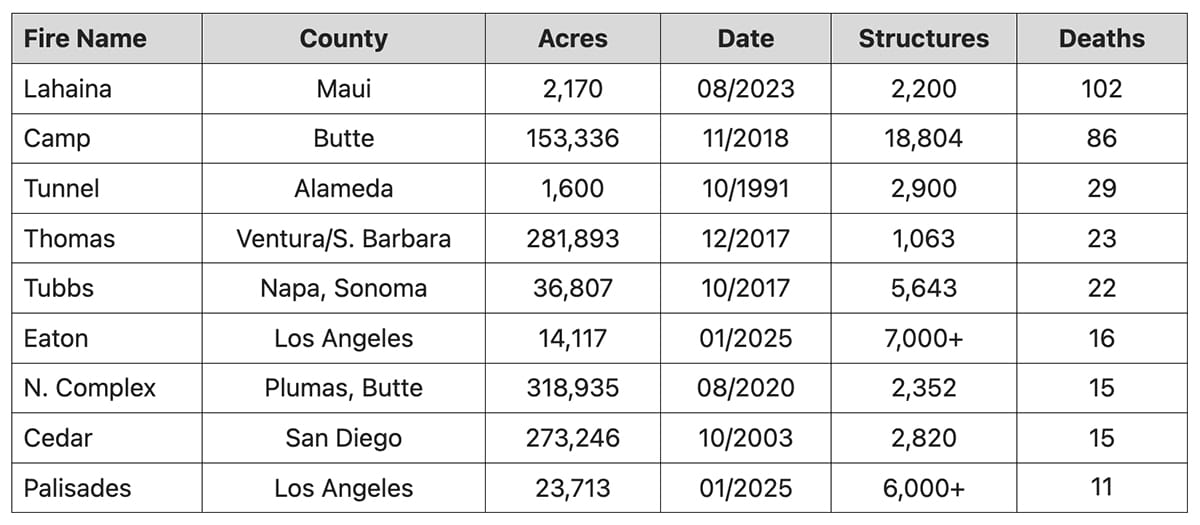
By all measures, fire conditions in Southern California were extraordinary this winter, with severe gusting winds of up to 100 mph and bone-dry drought conditions in an environment that's naturally dry.
But the elements that lead to disaster could also play out here, Sprague said: Dry vegetation combined with heavy winds from the east (Diablo winds) and older homes, many made of wood, in dense neighborhoods.
The greatest threat to Berkeley has historically been in the fall when Diablo winds blow and vegetation is dry following months with little to no rain, though climate change is linked to less predictable weather.
"These factors have, again and again, contributed to vegetative wildfires penetrating communities, igniting structures and transitioning into a wind-driven structure-to-structure conflagration, which overwhelm available firefighting resources," he said.
Berkeley Mayor Adena Ishii has called a special City Council work session about EMBER on Tuesday, Feb. 11, at 4 p.m.
(As of publication time, the agenda had not been posted.)
The work session is an early step along the way to potential adoption, BFD said.
BFD also intends to hold several community workshops before the final recommendation goes back to council, which is expected to happen in March.
Berkeley EMBER plan includes new quarter-mile buffer
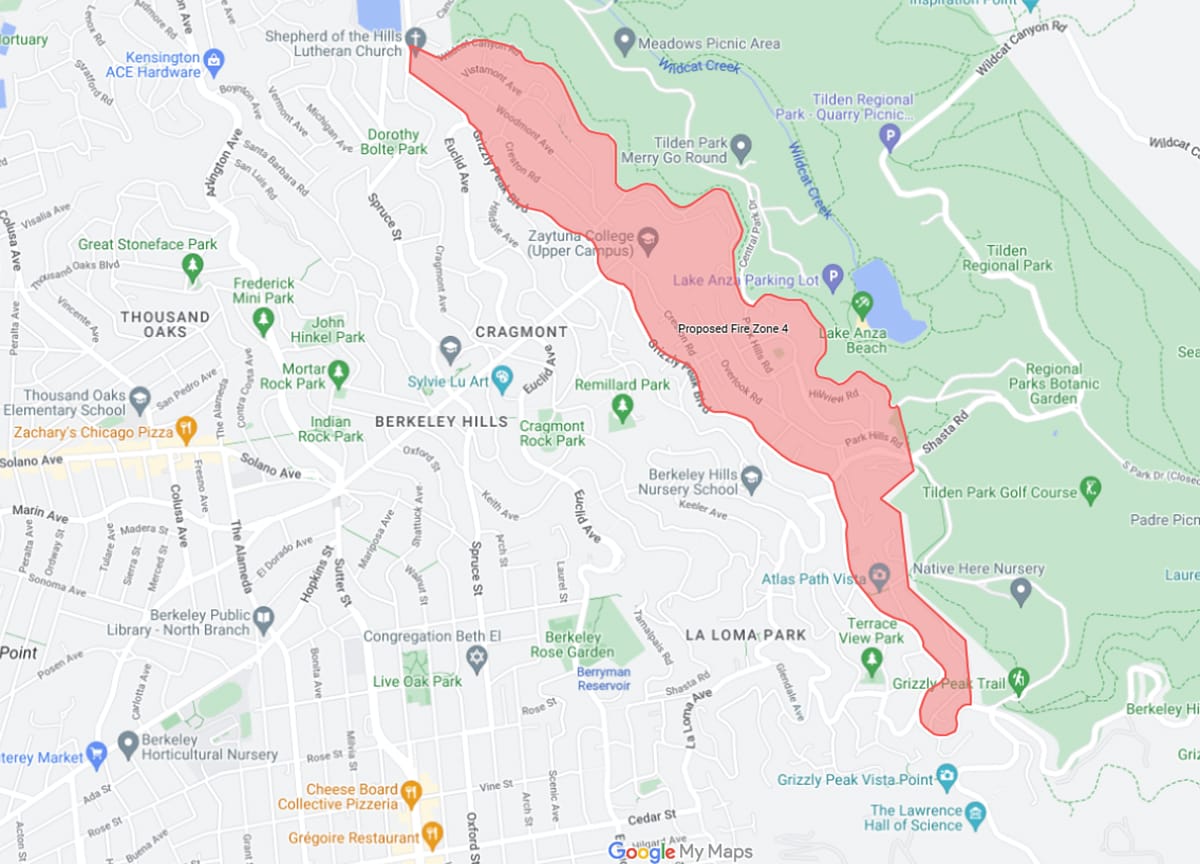
The EMBER proposal has three main elements, which are intended to work in concert. They include:
Berkeley currently has three fire zones, from Zone 1 mostly in the flats and with the lowest hazard, to Zone 2 covering much of the hills, to Zone 3, the highest hazard area, encompassing the Panoramic Hill neighborhood above UC Berkeley.
Under the new plan, the eastern portion of Zone 2 along the East Bay park district boundary would become the new Zone 4 — essentially a bump-up in hazard severity.
The change is based on fire department modeling of fire behavior, so zones 3 and 4 together would include the Berkeley neighborhoods facing the highest wildfire threat.
Properties in existing Zone 2 not slated for the new Zone 4, largely below Grizzly Peak Boulevard, would still be required to do wildfire mitigation. All of Zone 2 is considered a high fire hazard severity area. But not as strict as proposed for Zones 3 and 4.
The city's fire zones aren't to be confused with the state's Fire Hazard Severity Zones, which are used as a blueprint for regulations, policy and funding decisions.
But there is overlap: The state's highest-severity zones in Berkeley are almost identical to the city's zones, including the proposed Zone 4.
Most of the Berkeley Hills are in the state's very high severity zone.
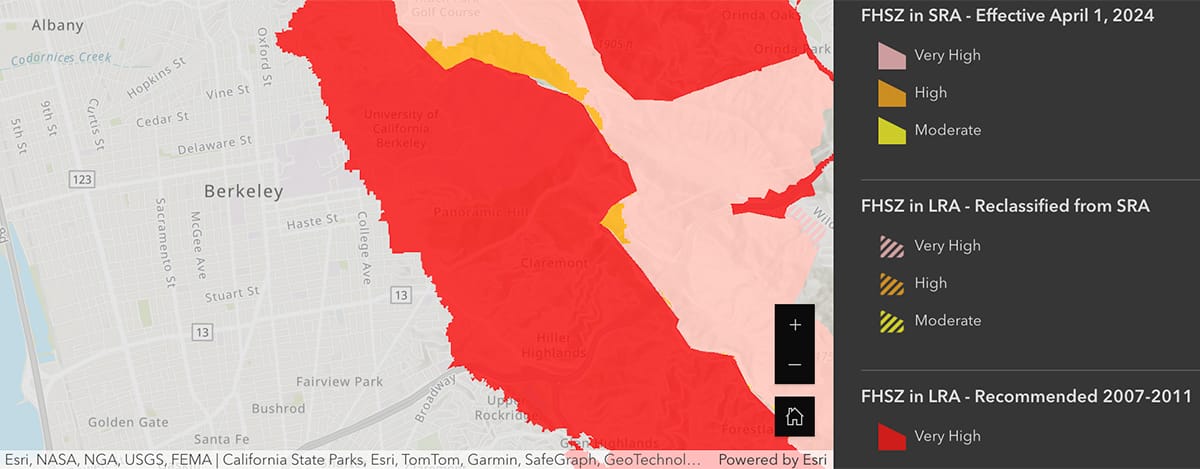
Zones 3, 4 would be subject to more stringent "Zone 0" rules
Blowing embers often land against external walls, easily igniting leaves, plants, wooden patio furniture and any burnables in the area, which in turn can quickly ignite structures.
Studies consistently show creating a noncombustible or ember-free zone around the base of buildings can greatly reduce the chance of this happening.
Defensible space, required by state law in California's highest wildfire hazard areas, including in Berkeley, sets yard maintenance standards in zones from structures out. The strictest clearing is closest to buildings.
In a twist of California legislative limbo, or some might say black hole, "Zone 0" was adopted by lawmakers in 2020 but has yet to be enacted.
The state Board of Forestry & Fire Protection is charged with writing the details of the law, such as what will and won't be allowed. It can only be enforced after this is done.
This process, which includes gathering input from statewide stakeholders, was estimated to take about a year. It is now stretching into year five, with no final product in sight.
This leaves fire agencies in a Zone 0 gray area. They can educate about the law, and say it's (probably) coming but, so far, it has no enforcement teeth.
Cal Fire, the state's fire agency, sets defensible space law, with enforcement by local fire departments.
Local jurisdictions can enact their own or stricter requirements, but can't go weaker than the state.
And this is what Berkeley Fire wants to do.
"We don't need any more evidence," said Colin Arnold, Berkeley Fire's assistant chief in charge of the urban interface division, of the value of an ember-resistant zone.
"We know what we should be doing, in fact the whole state knows what we should be doing, but we haven't been able to do it yet," he said. "Let's get this done."
"The most effective version of Zone 0 eliminates all combustible material within the first 5 feet of a home"
To date, the city has required a degree of Zone 0 compliance based on its interpretation of defensible space.
Berkeley's new EMBER initiative, which was already supported by the city's Disaster and Fire Safety Commission, calls for codifying strict measures in city law rather than waiting any longer for the state.
"The most effective version of Zone 0 eliminates all combustible material within the first 5 feet of a home and any outbuildings, attached decks and stairs," Arnold said. This includes underneath decks and stairs.
Under the city's proposed regulation, Zone 0 would prohibit weeds, grass, plants (including climbing vines), debris, wood mulch products, combustible fencing and gates, plastic trash and recycle cans, trellis, pergolas, shade coverings, combustible planters, privacy walls, boats, RVs, vehicles and other material that could be ignited by embers or flames.
Wood fencing would need 5 feet of fire resistance against buildings, such as metal or fire-resistant materials.
"If it could burn, it wouldn't be allowed there," Arnold said. Potted plants, with some conditions, would be an exception, he said.
Berkeley Fire hopes incentives will inspire homeowners
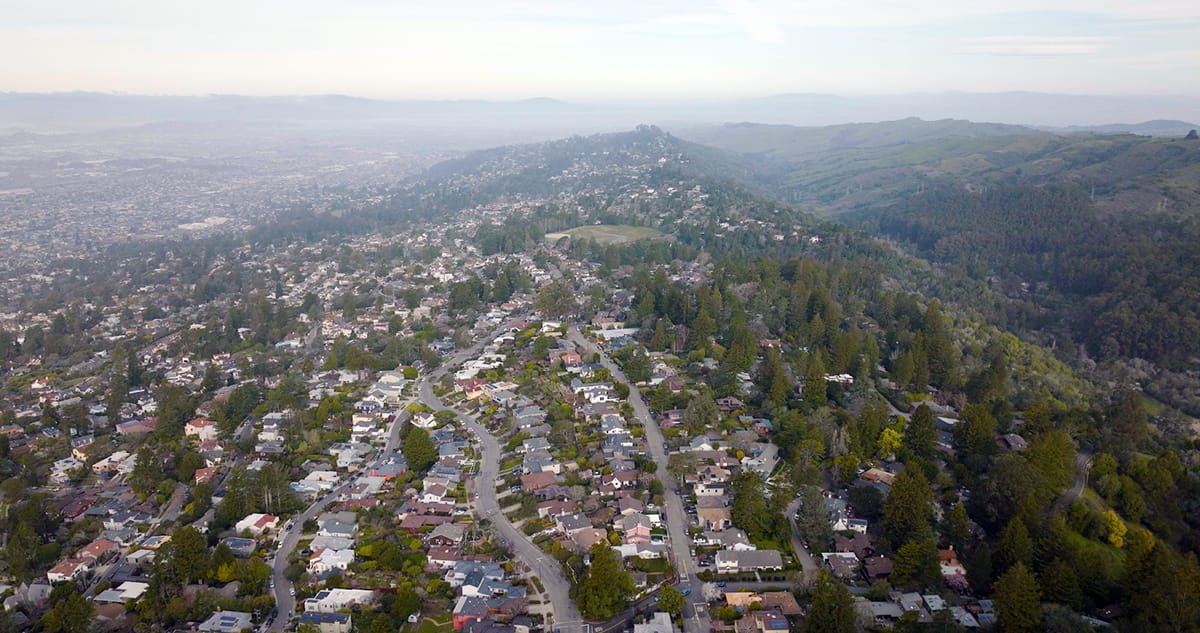
Home hardening measures include Class A non-combustible roofing, double-pane windows, ember-resistant vents, gutter guards, non-combustible exterior siding, under-floor protection such as gypsum sheathing and non-combustible decks.
State law requires new construction in high wildfire severity zones to adhere to strict fire codes with many of these measures. This includes large remodels and ADU's or in-law units.
But Berkeley is largely built-up, and new construction is rare.
The city can't legally require hardening on existing homes. The work can be expensive.
Berkeley Fire hopes incentives will spur homeowners to take these steps. It's also considering hardening requirements when a property is sold, similar to sewage lateral requirements, BFD Chief Sprague said.
"The fire department recommendations will include a proposal that the council consider expanding when home hardening should be required within Berkeley Fire zones 3 and 4, looking at existing successful programs like seismic and sewer lateral retrofitting as models," he said.
Additionally, BFD wants the Berkeley City Council to consider prohibiting wood shake roofs, as San Rafael has.
"In the 1991 Oakland-Berkeley Hills Fire, it was estimated that each burning home with a wood shake roof contributed to the ignition of 10 other homes," Sprague said.
Zone 0 and home hardening are "peas in a pod"
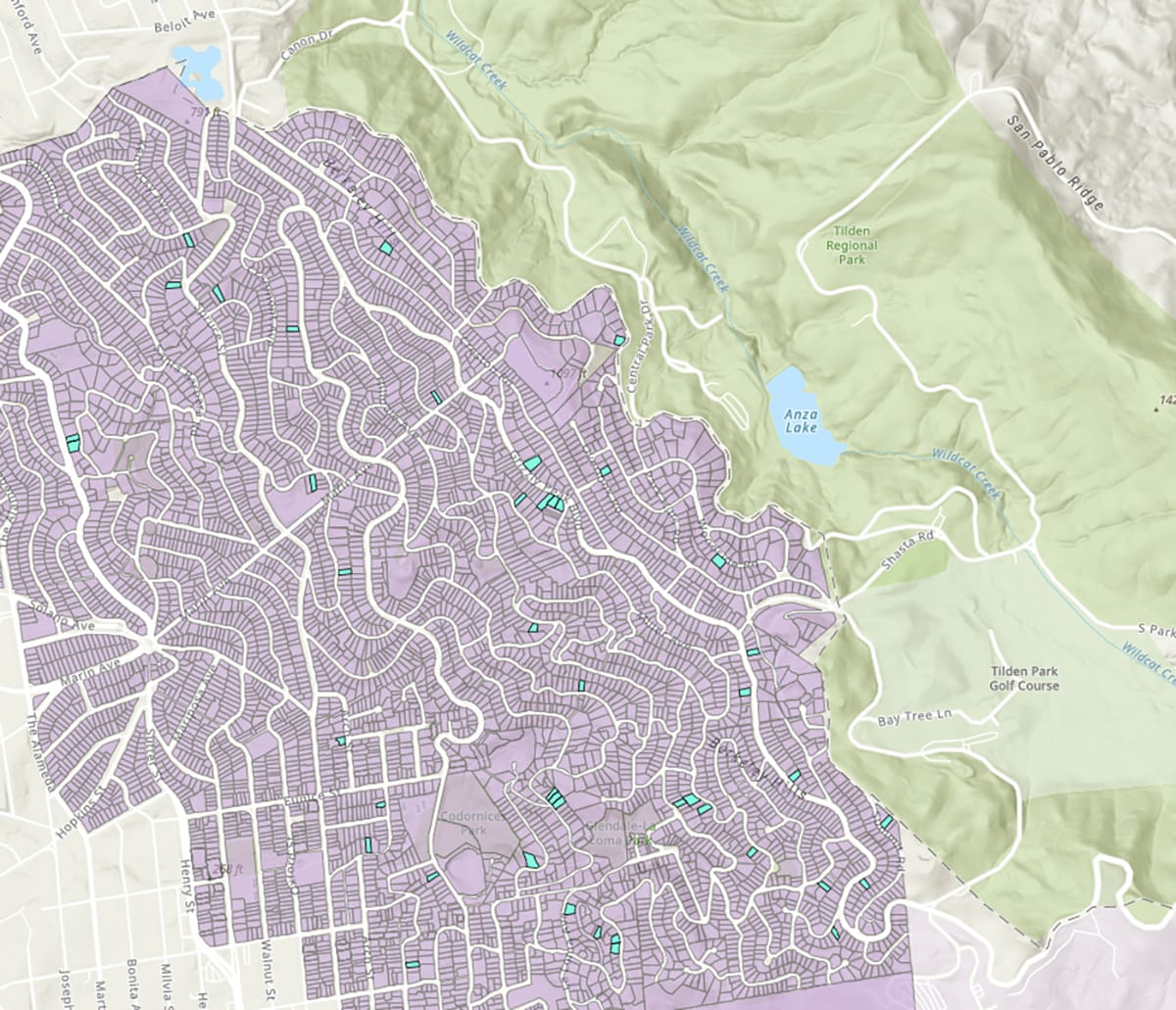
Calling the Zone 0 and home hardening proposals "two peas in a pod," the fire department says they must go hand in hand for maximum benefit.
"Wildfires pose an ignition threat to structures from radiant heat, direct flame and embers, with embers being especially hazardous since they can travel long distances beyond municipal and property boundaries," Sprague said.
"While we can reduce the risk of wildfire spreading on the ground by managing vegetation and removing flammable materials around homes, embers remain a significant challenge," he continued. "To truly protect a home, it must be 'hardened' to resist both fire and embers — meaning it's built or retrofitted with materials and features that can withstand these exposures."
Slowing fire can save lives, he said, especially in dense neighborhoods such as the Berkeley Hills.
"The more time it takes a vegetative fire to ignite combustibles around homes and homes themselves, the more time there is for the community to evacuate and for firefighting resources from around the region to amass," the chief said, "and suppress the ignitions that do occur."
"I'm under no illusion that this process will be easy"
Those working on the EMBER proposal know it faces hurdles.
"I'm under no illusion that this process will be easy. We're asking a lot of the community," said Councilman Brent Blackaby, of District 6, in the hills.
Neighborhood outreach is already in the works. So far, he said, he's heard largely favorable responses.
"People know this is important and know we're going to have to make some shared sacrifices," Blackaby said. "Public interest in this is great, and we have to get it right. I think the reality is that people recognize this is work that needs to get done."
Arnold, BFD's wildland division chief, said he believes the fire department's annual budget, including grants in hand, can largely cover the new framework — education, inspection, enforcement.
At least out the gate. Berkeley's wildland fire response is funded largely by Measure FF, an $8.5 million yearly emergency services parcel tax approved by voters in 2020.
"You can't get people out as fast as fire moves"
Home hardening, however, will need new resources, he said.
"I think the home hardening piece is an important part of the puzzle for a resilient neighborhood. Without a funding source to provide support, it's unlikely that residents independently harden their community," Arnold said.
"My hope is that we can dive head first into a combination of options, such as tax rebates, grants, etc. Without financial support, I wouldn't think we would get adequate buy in."
Even if the new approach is adopted, the fire department says early evacuation on the most extreme red flag days, when the city sends a special alert, gives the best chance of saving lives, Arnold emphasized.
"Under extreme conditions we as humans can't move as fast as fires, especially given the infrastructure of the streets in the hills and the numbers of people that live there," he said. "You can't get people out as fast as fire moves."
Kate Darby Rauch spent more than 10 years as a daily news reporter with the East Bay Times and has freelanced for numerous publications, including the Washington Post, Newsday, the Seattle Times, San Francisco Chronicle and Oakland Magazine.



